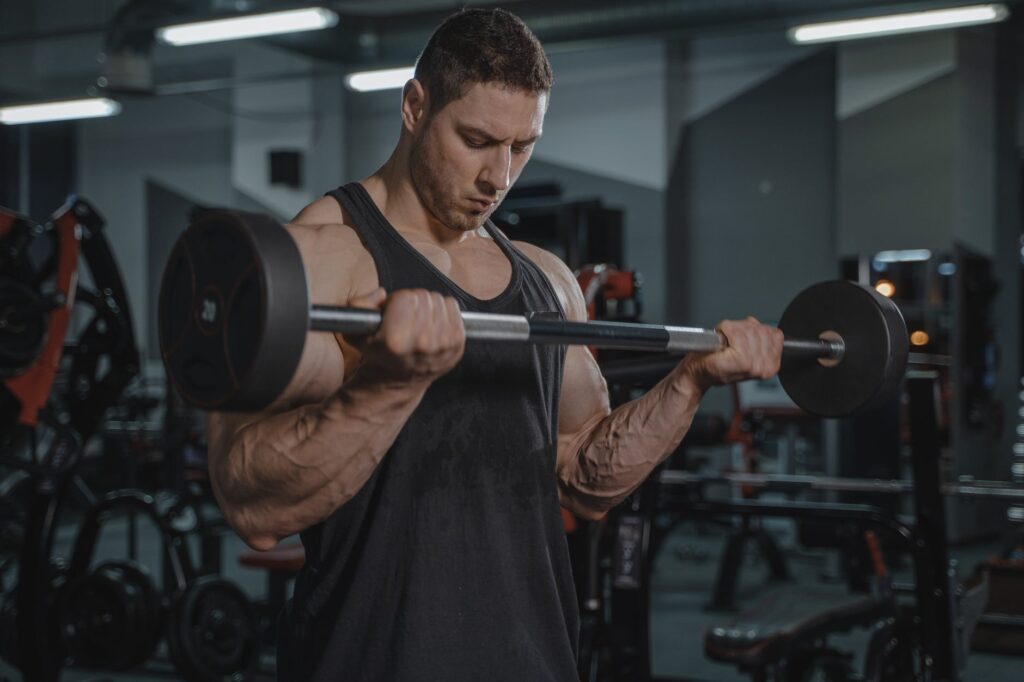Do I Need to Periodize?
The main value of periodization for all trainees comes from the fact that you cannot optimally impro...
| November 11, 2021
By Trevor Mah
Warning: Undefined variable $post in /home/u355111447/domains/wellnessadept.com/public_html/wp-content/plugins/oxygen/component-framework/components/classes/code-block.class.php(115) : eval()'d code on line 3
Warning: Attempt to read property "ID" on null in /home/u355111447/domains/wellnessadept.com/public_html/wp-content/plugins/oxygen/component-framework/components/classes/code-block.class.php(115) : eval()'d code on line 3
Read time: 3 min.

Varying weights between your sets is a great method to develop strength, break through plateaus, and add a bit of challenge to your lifts. Traditional contrast training protocols in a nutshell involve lifting a heavy weight, then contrasting the subsequent set with a lighter load. What this means is that the previous heavier lift “tricks” your body into being more fired up so the next lighter load is easier to lift. This is based on a training principle of post-tetanic potentiation (PTP).
PTP helps facilitate more powerful muscle contractions after a very strong muscular contraction. Remember that the difference between strength and power is that power involves the element of speed (time). Your nervous system is primed from your heavy lift, so the next set (or similar exercise) will be more efficient and powerful. Here are some examples for how contrast training can help:
Note that this is not the same as a drop set. A drop set involved lowering the weight within the same set, not a separate one.
Break Plateaus
Ramping up to a new personal record (PR) in a lift is fun and rewarding, but it’s common to hit a wall in training. Contrast training allows for a bit of a “cheat” with your nervous system to break through lifts at a certain rep range. For example, if you struggle with lifting something for your 5RM, performing a heavy 2-3 RM before trying a new 5RM can help with that. You will trick your brain by making the next lift not feel as heavy in comparison and can also provide confidence to complete it.
Power & Speed
You do not have to contrast the next exercise with a lighter load as you can perform a lift with similar mechanics if you are looking to build more dynamic power and athleticism. For example, you can contrast a heavy deadlift with a vertical jump. Both movements work the same way, and naturally, your bodyweight movement will be lighter anyways. This can help break through plateaus in a different sense, and simultaneously allow you to train both strength and power.
Other dynamic contrast combinations include bench press + explosive pushups; lunges + sprints; weighted pullups + pullups, the combinations are endless. Programming these in will take some skill and practice, but contrast training can be an option to help explore and build your athletic base.
One other concept worth mentioning is wave loading which is an advanced method that is based on contrast training.
Wave Loading
Wave loading is a useful strength training protocol that is based on contrast training. It is normally a high intensity method, meaning that it should be performed sparingly as it can be very taxing. With wave loading, you perform lifts within a small subset building up to a heavy near-maximal weight. Then you ramp up the next subset by adding more weight and capitalize on the adaptation your nervous system is going through (assuming you were able to make all your lifts of course).
As easy way to break this down is as follows in this example:
| Wave 1 | 1 set of 5 @ 200lbs | 1 set of 3 @ 225lbs | 1 set of 2 @ 235lbs |
| Wave 2 | 1 set of 5 @ 220lbs | 1 set of 3 @ 235lbs | 1 set of 2 @ 245lbs |
| Wave 3 | 1 set of 5 @ 230lbs | 1 set of 3 @ 245lbs | 1 set of 2 @ 255lbs |
In the last set (ninth), the lifter will have escalated to the heaviest lift of the training session. This may or may not be a PR, but note that all previous sets should not be completely foreign territory when it comes to intensity for safety reasons.
Wave loading is very intense, and does have a fairly high volume count as well. This generally works best with large compound lifts (squat, bench press, deadlifts), but you can certainly use it for weighted pull-ups, lunges, etc. too.
What contrast loading or wave loading can do is allow you to lift heavier weights at a specific rep range that you may not have been able to perform during a normal build up. Thus, this can help people achieve new personal records and break through plateaus in their training.
In conclusion, contrast training is a useful tool that can help, but it will still take proper programming and patience to reap the full benefits. You can surely experiment and try out manageable weight as a start, but when it comes to pushing your limits then you will need to be more diligent.
New articles, content with tips, inspiration, and coaching directly to your inbox.